


AN AREA BASED STRATEGY FOR FLEET STREET QUARTER
A placemaking and public realm vision for the future of Fleet Street Quarter
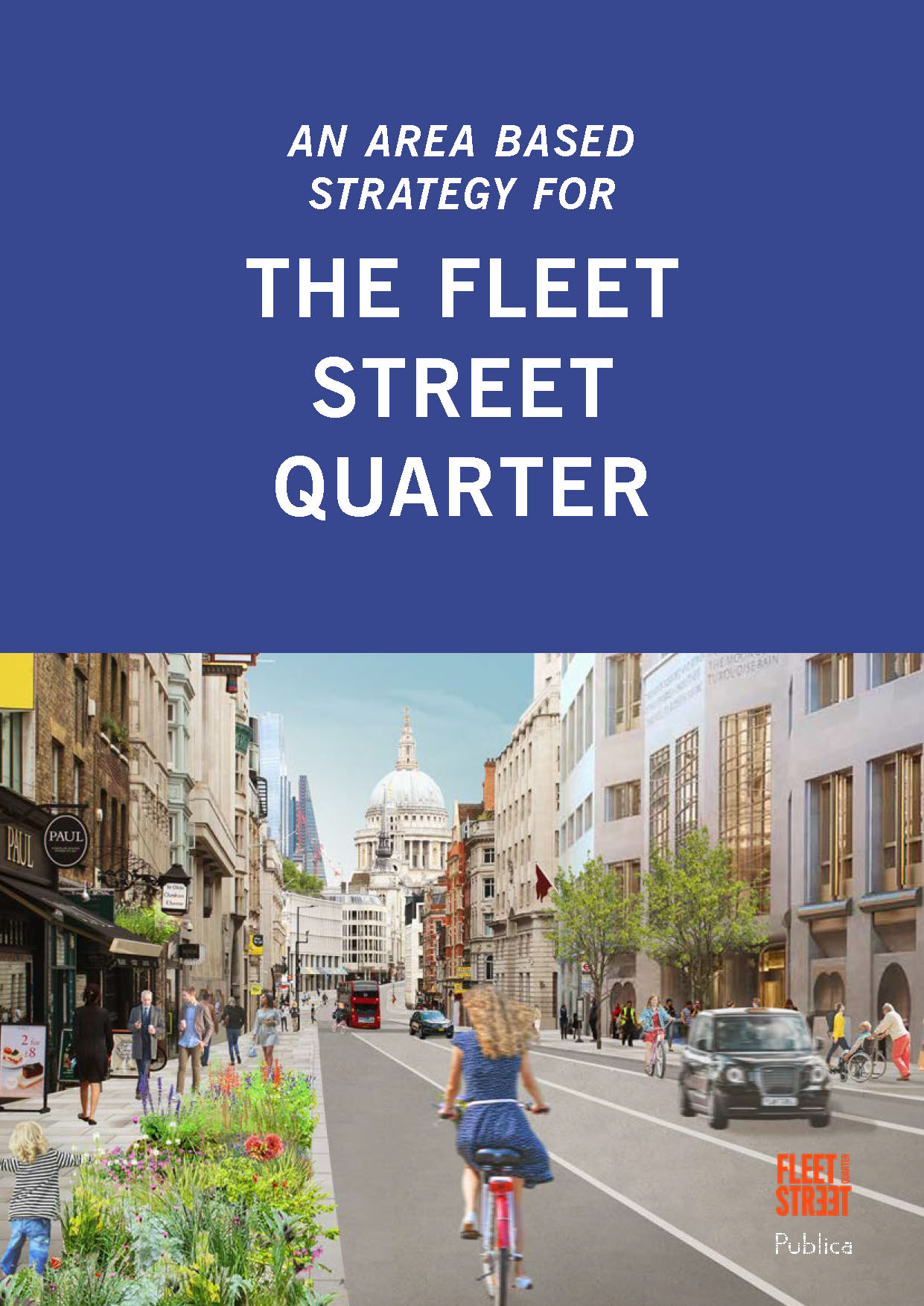
Year
May 2021 - September 2021
Service
Vision, Strategies & Masterplans
Client
Primera on behalf of the Fleet Street Quarter Partnership
Collaborators
The Fleet Street Quarter Public Realm and Environment Steering Group, The City of London
Location
The City of London, England
The strategy addresses the challenges facing the Fleet Street Quarter area while developing a vision that builds on the area’s assets and strengths. It sets out a framework - for future placemaking strategies and public realm improvements - to help to ensure that the area can fulfil its upcoming potential.
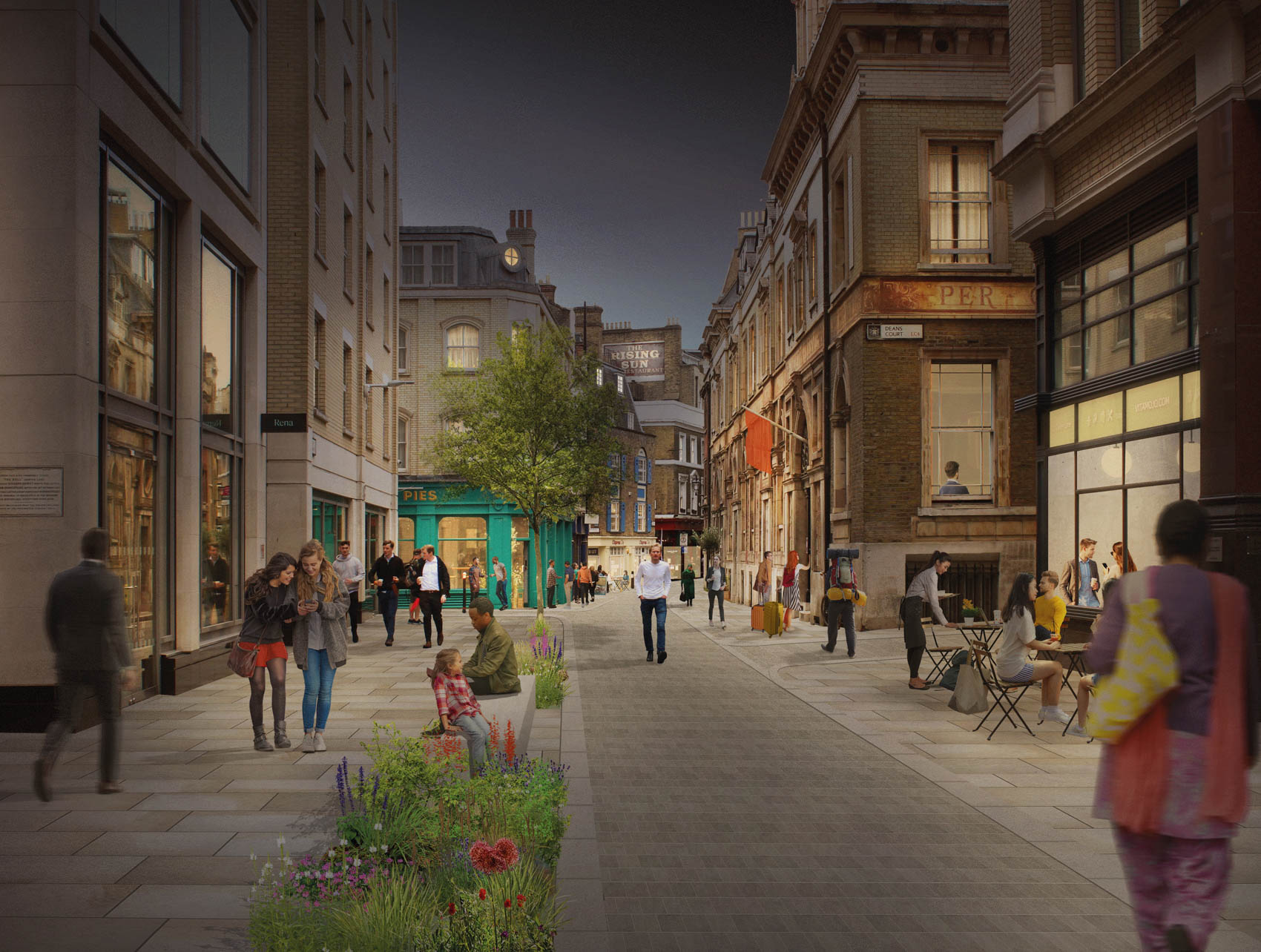
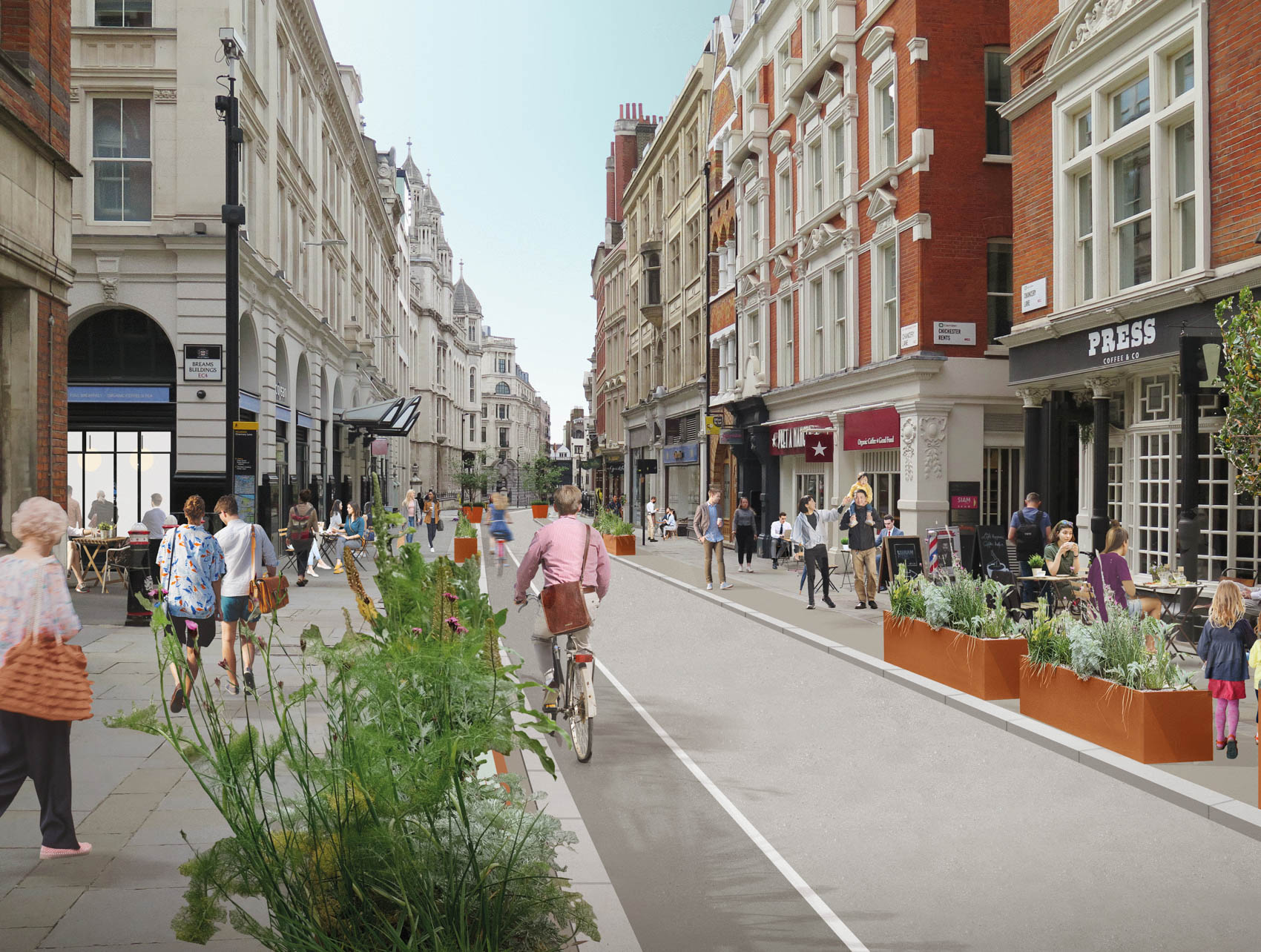
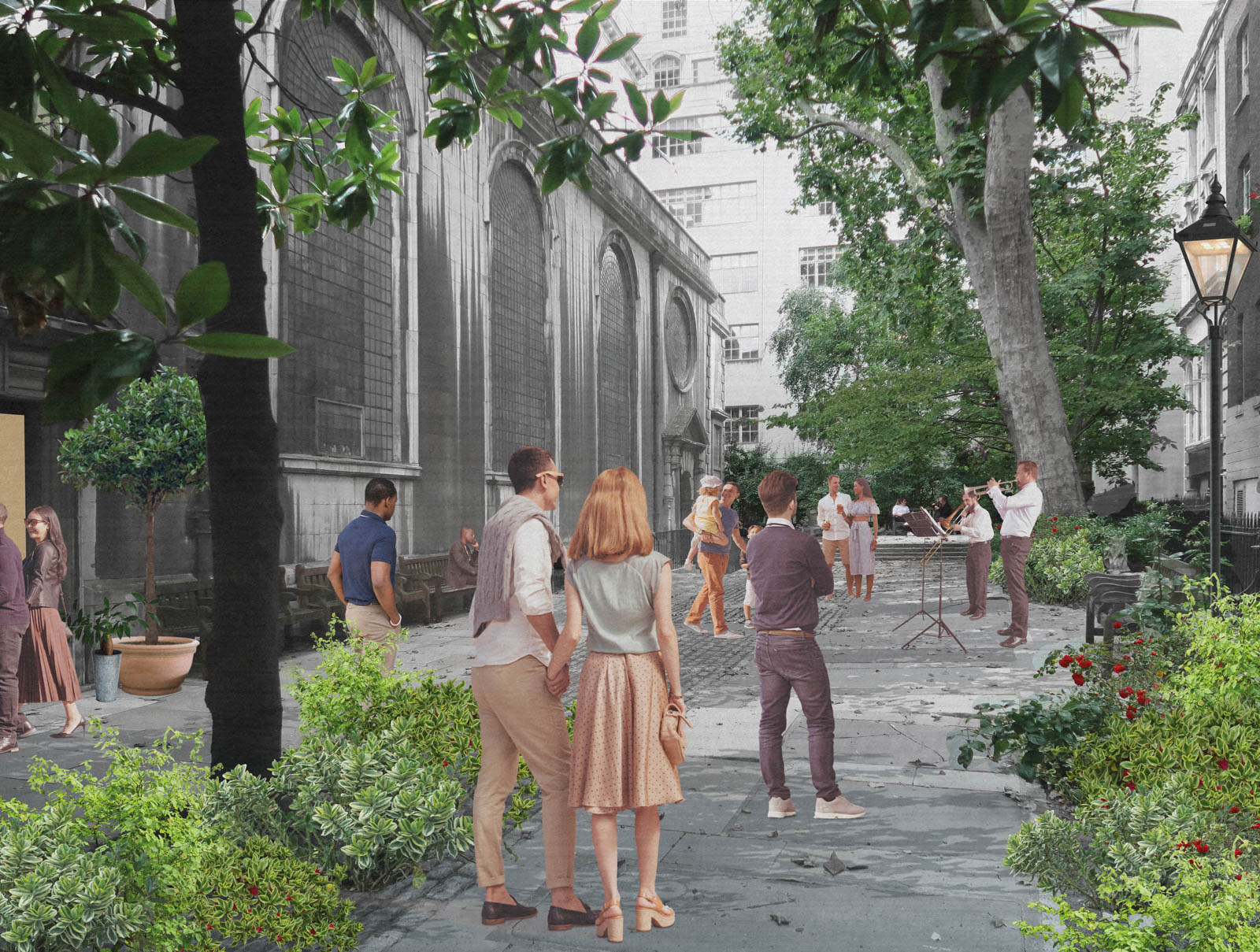
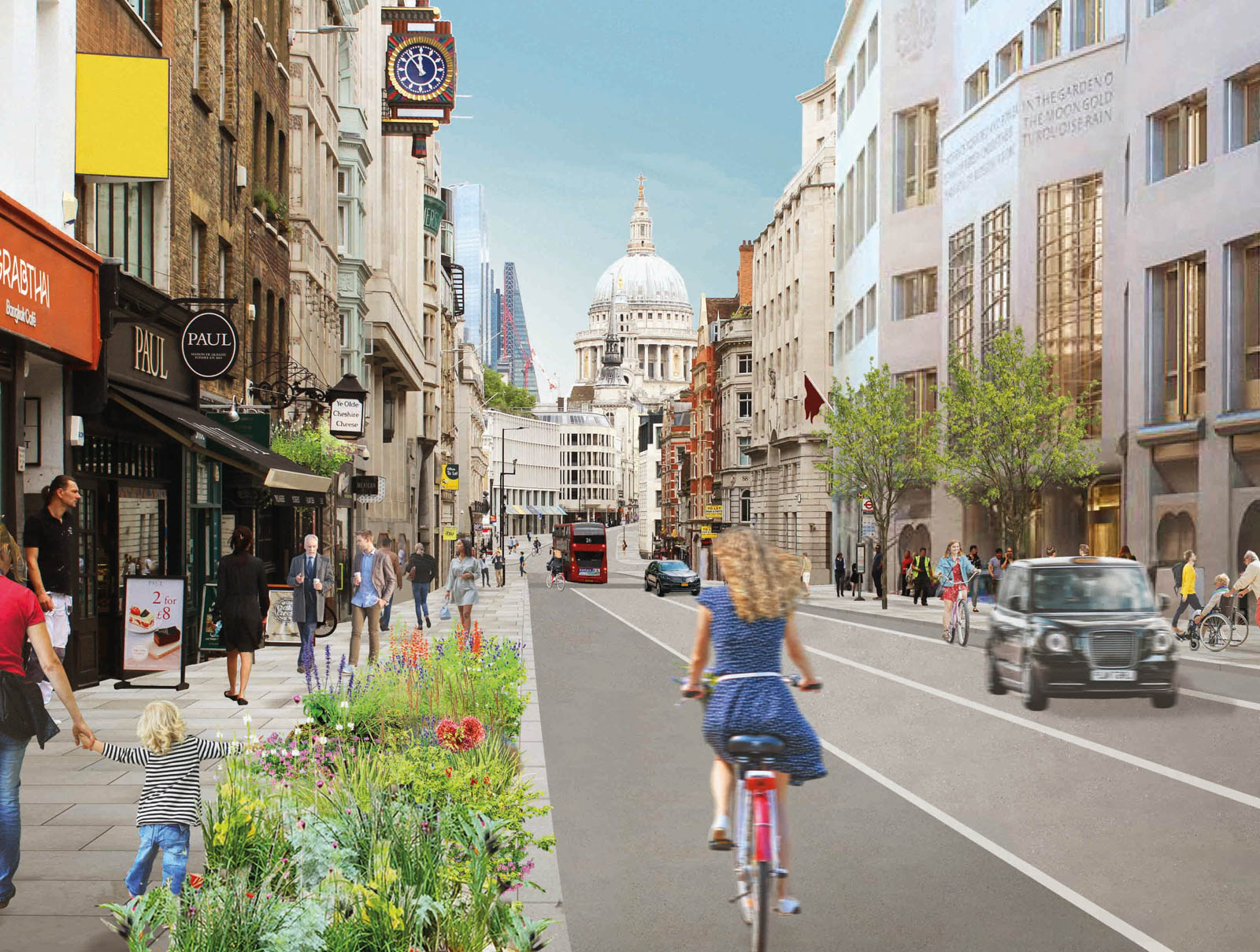
Vision for Carter Lane
Vision for Fleet Street
Vision for St Brides Churchyard
Vision for Fleet Street
Fleet Street Quarter lies between and connects the City of Westminster and the City of London. The significance of this central and ‘in-between’ location is intertwined with both the history of the area and its future. Although the newspapers have dispersed, the area’s location and connectivity have always been attractive to businesses, evidenced by the current development pipeline.
The challenges are evident. The area has lacked a clear identity in the years following the departure of the media, and the consequential decline of activity has been compounded by the longer terms changes to work patterns following the pandemic. Spatially, the large traffic arteries cause severances and poor air quality, and there is a deficiency of open space and greenery.
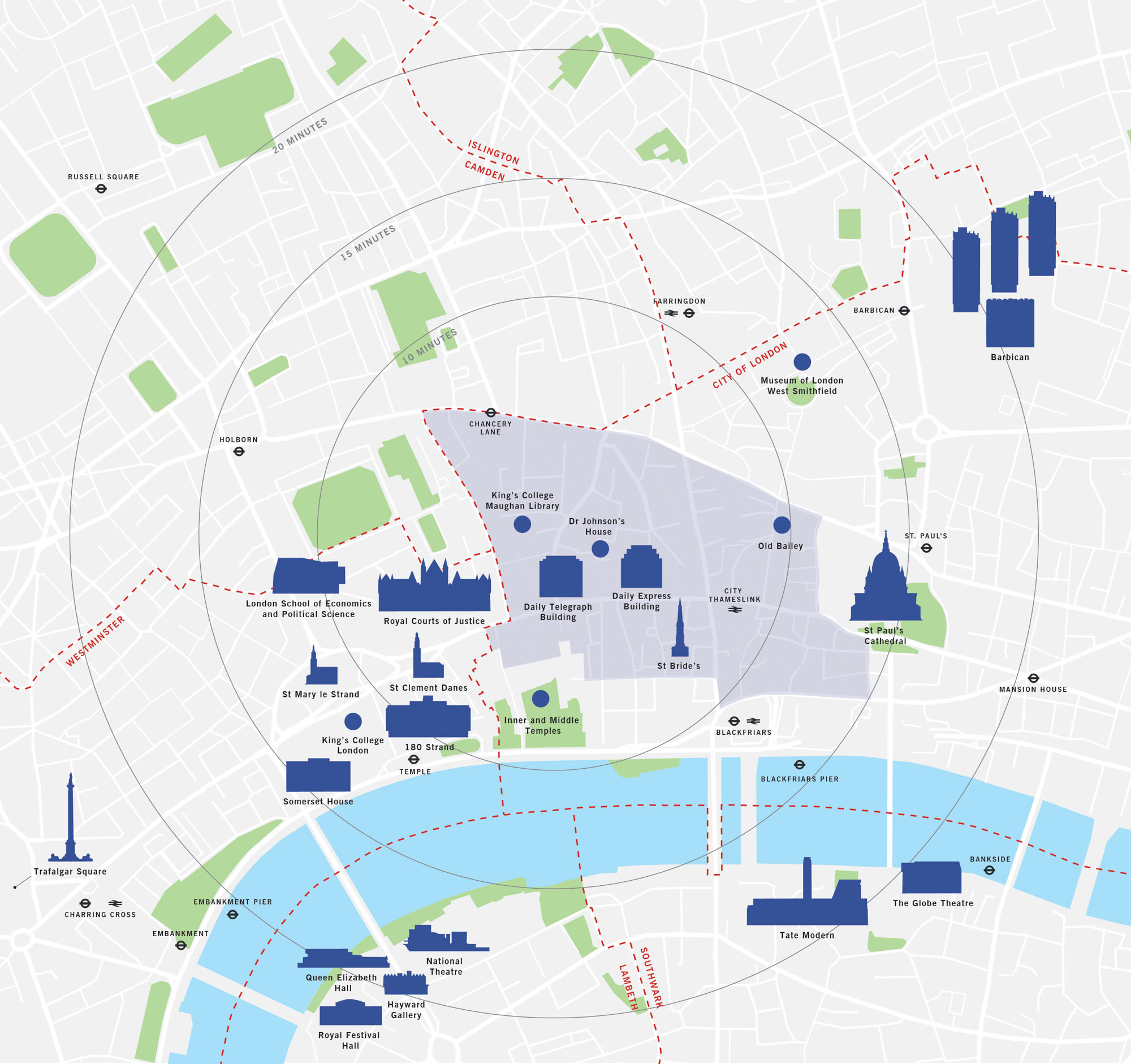
Fleet Street Quarter and surrounding area
This Area Based Strategy sets out a vision for the improvement of the public realm of the Fleet Street Quarter over the short, medium, and longer terms. The vision is based around three interconnected strategies – improving the public realm, encouraging activation, and connecting to surrounding neighbourhoods. This vision aims to re-invigorate the area into becoming a memorable, sustainable and vibrant part of London that is welcoming, inclusive, supportive of a variety of uses, while providing a high-quality public realm for the area’s remarkable history and future.
This strategy was developed working closely with the Fleet Street Quarter Partnership Public Realm & Environment Steering Group and representatives from the City of London. The strategy and principle-based vision are based on the key findings from Publica’s initial studies of the area – its history, spatial and environmental characteristics, transport connectivity, and policy context.

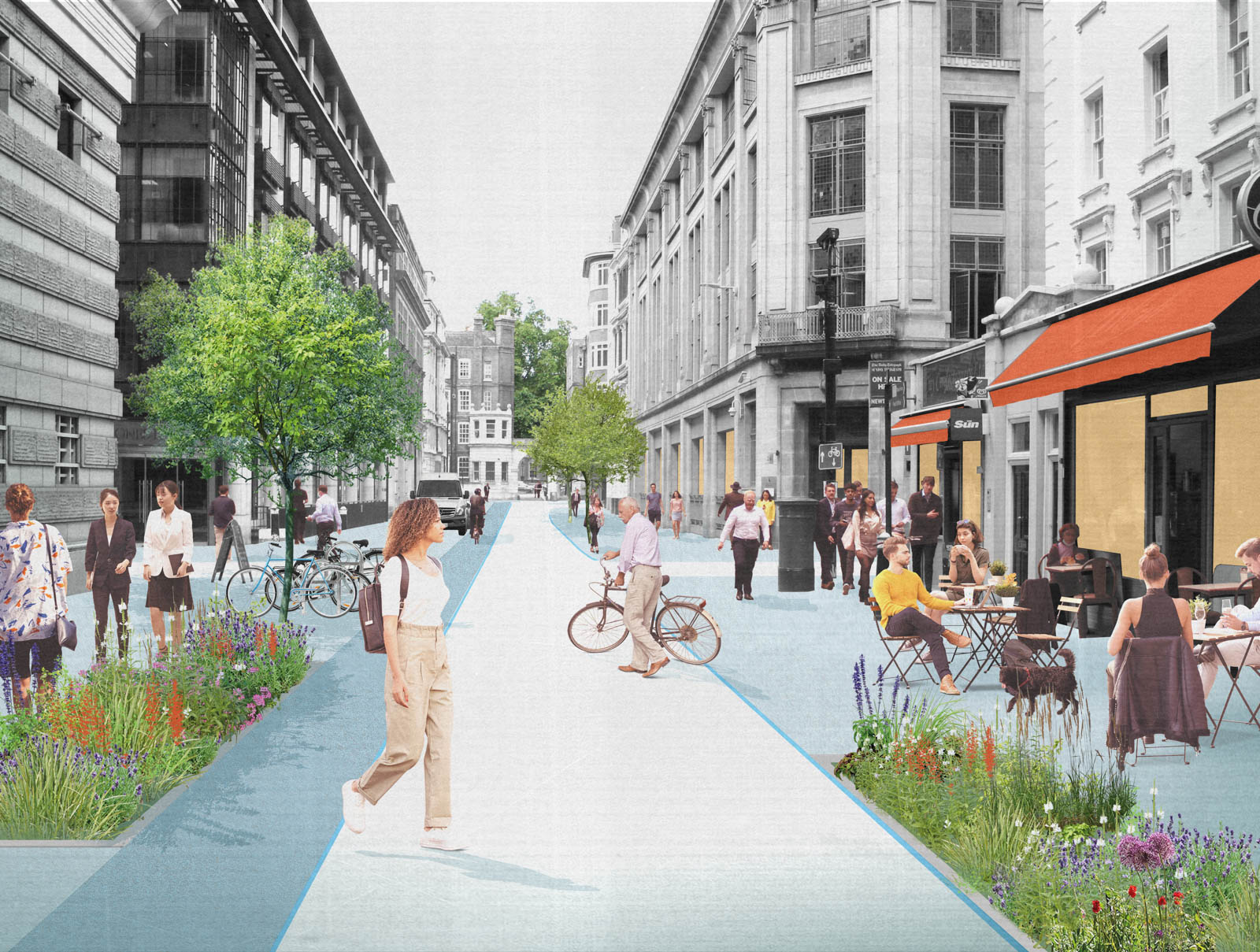
A vision for Fetter Lane
A vision for Tudor Street
“While sometimes forgotten, this area has a rich history, presenting an opportunity for reinvigoration through the modern renewal of its past. The public realm can and should do more to support the growth and evolution of this area. It’s not just about what happens within buildings, but what happens in the spaces in between them.
This Area Based Strategy presents a compelling vision for the future of Fleet Street Quarter’s streets, spaces and public life. We hope that it inspires our partners and stakeholders to share ideas and become involved.”
MARTHA GREKOS, FORMER CHAIR OF THE FLEET STREET QUARTER PARTNERSHIP
PUBLIC REALM & ENVIRONMENT STEERING GROUP
AN AREA BASED STRATEGY FOR FLEET STREET QUARTER
A placemaking and public realm vision for the future of Fleet Street Quarter

Year
May 2021 - September 2021
Service
Vision, Strategies & Masterplans
Client
Primera on behalf of the Fleet Street Quarter Partnership
Location
The City of London, England
The strategy addresses the challenges facing the Fleet Street Quarter area while developing a vision that builds on the area’s assets and strengths. It sets out a framework - for future placemaking strategies and public realm improvements - to help to ensure that the area can fulfil its upcoming potential.




The Fleet Street and Ludgate Hill is identified as a major long-term project in the area based strategy.
Chancery Lane is a characterful historic lane and key north-south artery for pedestrians connecting the various Inns of Court.
Carter lane is a historic street that could be designed as a high-quality unified place through widened footways, new paving, improved crossing widths and greenery.
The site of St Bride’s church has been occupied since the Roman period with the churchyard providing a shift in enclosure and noise levels, creating a sheltered space that contrasts with the bustle of Fleet Street.
Fleet Street Quarter lies between and connects the City of Westminster and the City of London. The significance of this central and ‘in-between’ location is intertwined with both the history of the area and its future. Although the newspapers have dispersed, the area’s location and connectivity have always been attractive to businesses, evidenced by the current development pipeline.
The challenges are evident. The area has lacked a clear identity in the years following the departure of the media, and the consequential decline of activity has been compounded by the longer terms changes to work patterns following the pandemic. Spatially, the large traffic arteries cause severances and poor air quality, and there is a deficiency of open space and greenery.
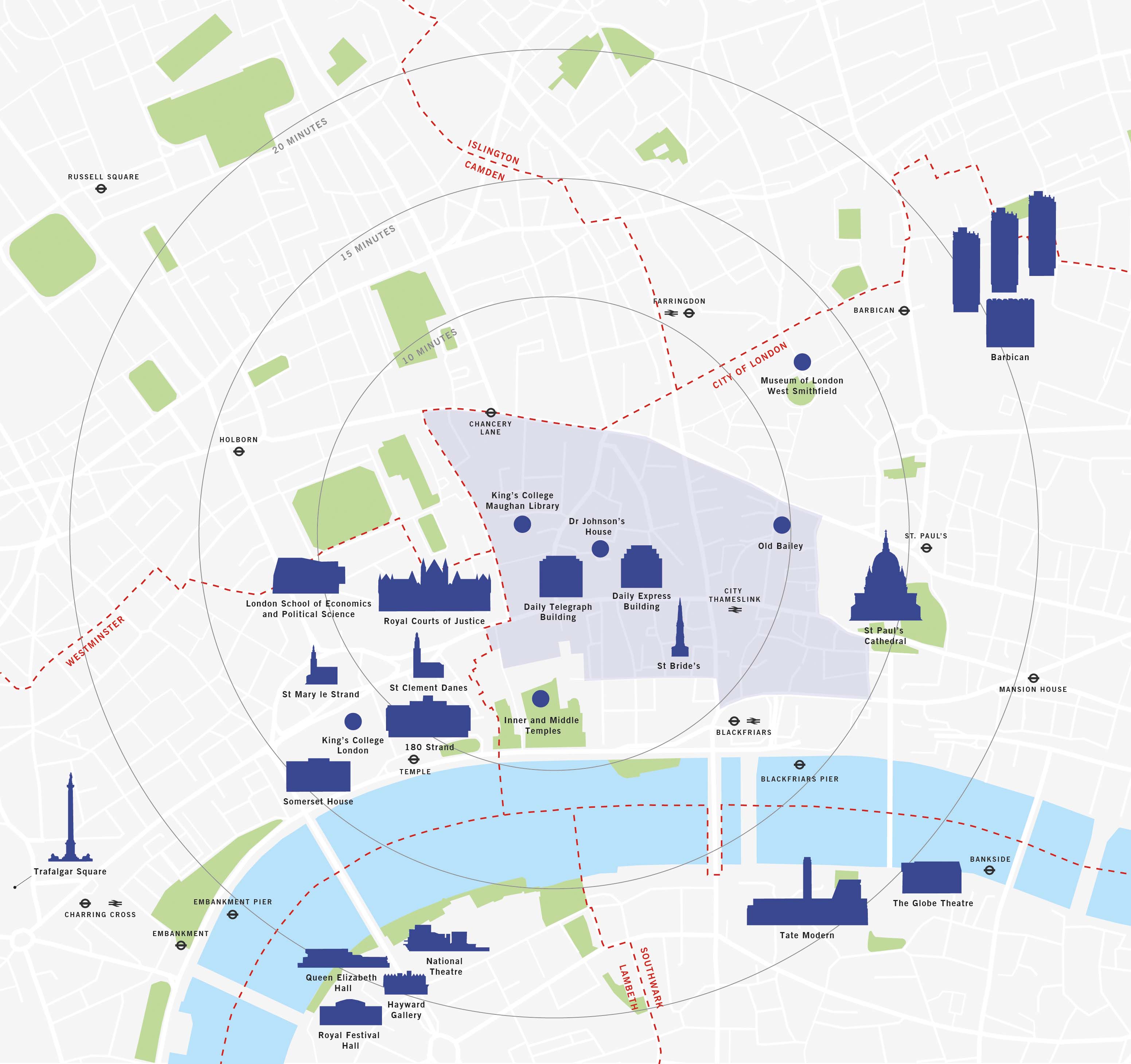
Fleet Street Quarter’s location is one of its greatest assets with the potential to connect to activities taking place in adjacent areas, particularly to Strand Aldwych, West Smithfield, the River Thames and to the Southbank.
This Area Based Strategy sets out an implementable vision for the improvement of the public realm of the Fleet Street Quarter over the short, medium, and longer terms. The vision is based around three interconnected strategies – improving the public realm, encouraging activation, and connecting to surrounding neighbourhoods. This vision aims to re-invigorate the area into becoming a memorable, sustainable and vibrant part of London that is welcoming, inclusive, supportive of a variety of uses, while providing a high-quality public realm for the area’s remarkable history and future.
This strategy was developed working closely with the Fleet Street Quarter Public Realm & Environment Steering Group and representatives from the City of London. The strategy and principle-based vision are based on the key findings from Publica’s initial studies of the area – its history, spatial and environmental characteristics, transport connectivity, and policy context.


Fetter Lane is a no through traffic route that provides a key opportunity to strengthen pedestrian connections to Holborn, Farringdon, and Clerkenwell.
Tudor Street connects Blackfriars to Temple Gardens and connects the Quarter to the River Thames.
“This ambitious strategy sets out a visionary 15 year plan demonstrating how creative and cultural industries can contribute to our community wealth building agenda. I want Newham to be at the forefront of culture across London and beyond, creating lasting change and benefits that will be felt by all our residents as well as making Newham a destination and home for the very best cultural and creative organisations.”
MARTHA GREKOS, FORMER CHAIR OF THE FLEET STREET QUARTER PUBLIC REALM & ENVIRONMENT STEERING GROUP